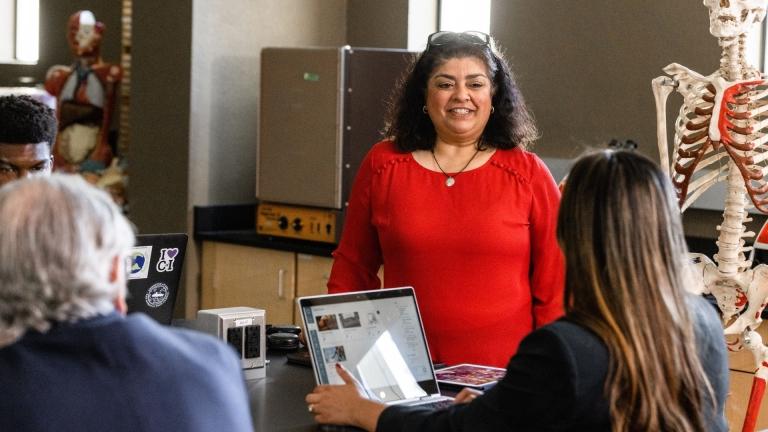When educational delivery was forced to shift during the pandemic, providing students with continued access to education was the top priority for higher education institutions around the world. However, as institutions adapted to online and hybrid course modalities, and found ways to support students with academic and mental health resources, faculty burnout grew. If institutions intend to retain and attract educators who can sustainably champion student and organizational success, realistic strategies for faculty empowerment must become a focal point. Let’s look at five methods for supporting educators.
Ask Faculty First
Because every institution is different, there is no one-size-fits-all approach to faculty needs. Instead of looking to solutions that have been effective elsewhere, start with understanding your faculty’s needs. If there is a governing community of faculty and administrators, speak with representatives to understand the consensus on matters important to your institution’s educators. Tools like surveys and faculty forums are other ways to gauge the needs of existing faculty within an organization.
Partner with Faculty to Define Success
Understanding the rules of a game is the first step to identifying a win. When developing a strategy for faculty empowerment, partner with educators to define clear standards and directives for hiring and retention, promotion and tenure, and professional development. Then foster an environment that allows faculty to be autonomous in how they pursue these goals.
Incorporate Incentives for Faculty Development
For many educators, the ability to explore creativity, scholarship, and entrepreneurship is an invaluable benefit of the career. But with increased teaching demands, educators have limited time, if any, for innovative research or pedagogy exploration. Recent research suggests that institutions should create a reward policy to motivate faculty to improve instruction, research, extension, and production. Opportunities for faculty to share their relevant industry expertise or take sabbatical to focus on research can significantly bolster faculty morale.
Mentorship, Mentorship, Mentorship
Access to mentorship is key for professional growth and advancement among faculty in higher education. Whether new, tenured or historically underrepresented, faculty of every kind should have avenues for garnering peer support, receiving grant and funding guidance, and pursuing professional development. Find out what resources and skills are of the most interest to existing faxculty and use that information to build an ongoing mentorship program that includes training for potential mentors.
Adopt Edtech that Maximizes Time Management
The education technology that educators are required to use play a significant role in their ability to manage time, teaching and learning. A reliable and comprehensive learning management system (LMS) enables educators to provide dynamic and engaging learning experiences wherever students are. As institutions evaluate faculty needs and how best to support them, they must also consider the LMS and edtech tools within their digital ecosystem. Are these tools accessible, easy to adopt and use, and scalable? Can administrators see and understand how the tools are being used across the institution to quickly inform decisions? If the answers to these questions aren’t a resounding “yes,” consider technology that aligns with the direction your institution is trying to go.
Coming out of a global pandemic, addressing student needs is only half the battle. Higher education institutions have a responsibility to also support those who champion student success everyday: educators. The shift to reimagining how education is delivered, and the resources necessary to facilitate that shift, has to include the bandwidth, training, and empowerment of faculty. Every strategy must recognize the reality and humanity of being an educator today, and prioritize sustainable methods to address them.
Related Content
 inst-3step.jpg
inst-3step.jpgBlogs
 13lmsfeaturesthatbenefitstudentlearning.jpg
13lmsfeaturesthatbenefitstudentlearning.jpgBlogs
 community-homepage.jpg
community-homepage.jpgBlogs

